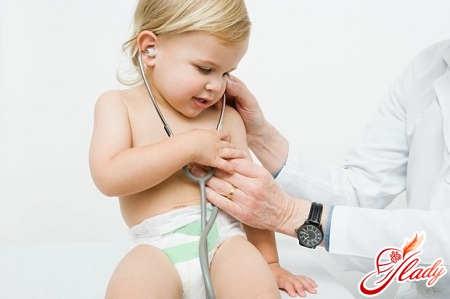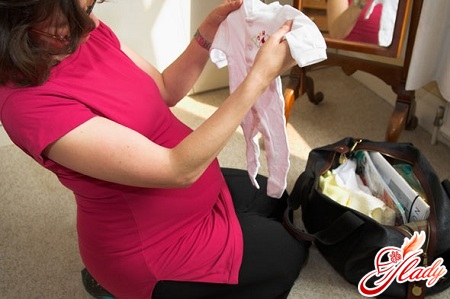 The birth of a child has always been a real mystery.As, incidentally, is the conception of the baby, and its intrauterine development. And it is not surprising that future parents have a lot of reasons to worry. Of course, first of all, for the health of the future baby. Especially since now future mothers constantly hear a lot of "horror stories!" from TV screens, from computer monitors, from "well-meaning" neighbors and girlfriends. Fortunately, in most cases, babies are born absolutely healthy. But sometimes something happens and the child is born with pathologies. Unfortunately, in about one case per thousand pregnancies, there are some congenital malformations of varying severity in the fetus. There are a variety of fetal developmental anomalies - it is almost impossible to list them all. But we will tell you about the most basic of them. Just please do not be scared while reading this article - the risk that you will give birth to a sick baby is minimal.
The birth of a child has always been a real mystery.As, incidentally, is the conception of the baby, and its intrauterine development. And it is not surprising that future parents have a lot of reasons to worry. Of course, first of all, for the health of the future baby. Especially since now future mothers constantly hear a lot of "horror stories!" from TV screens, from computer monitors, from "well-meaning" neighbors and girlfriends. Fortunately, in most cases, babies are born absolutely healthy. But sometimes something happens and the child is born with pathologies. Unfortunately, in about one case per thousand pregnancies, there are some congenital malformations of varying severity in the fetus. There are a variety of fetal developmental anomalies - it is almost impossible to list them all. But we will tell you about the most basic of them. Just please do not be scared while reading this article - the risk that you will give birth to a sick baby is minimal.
Hernias
Hernias are the most common - theyare the most common fetal pathology and, fortunately, in most cases the mildest. To begin with, let's remember what a hernia is - it is a protrusion of internal organs from the cavities where they should be located, under the skin. The integrity of the skin remains intact. Hernia treatment can be very different - from massage to serious surgery. It depends on the hernia itself, its location and some other factors - the doctor will objectively assess the child's condition and select the optimal treatment, taking into account all available indications.
Dislocation and dysplasia of the hip joint
Almost as common as hernias in newbornship dislocations and dysplasia are common. This is the name given to a pathology in which the tissues of the hip joint do not develop sufficiently. If a baby is born with a congenital hip dislocation, the doctor will perform a reduction and then apply special fixed orthoses - at least for several months. If this measure is not enough, doctors will be forced to resort to surgical intervention. And if doctors diagnose a child with hip dysplasia, they will prescribe treatment with orthoses that move the baby's hips to the side. If this treatment does not help to cope with the problem, the child will also be prescribed surgery. Fortunately, in most cases, dysplasia can be cured quite quickly. However, of course, parents will need a lot of effort and patience.
Hare Lip
In the event that fusion does not occurlateral parts with the middle part of the upper lip, the general condition of the baby suffers very much - in particular, sucking is difficult. Non-union can be either unilateral or bilateral. Fortunately, today a cleft lip is not an incurable problem - in the first few weeks of the baby, he will undergo an operation that will remove this defect. Moreover - as a rule, the skill of surgeons is so high that in most cases there are not even traces of the operation.
Cleft palate
In some cases, there is insufficientfusion of the jaw and hard palate. As a result, the nasal and oral cavities are connected by a cleft. Cleft palate and harelip are pathologies that often go hand in hand. The child is deprived of the ability to breathe and suck properly. This defect is also corrected surgically. But unlike the previous pathology, the child is under the supervision of a doctor almost all his life. By the way, the dentist will be your child's best friend until about 16 years of age. If the operation is performed well, the child's appearance will not suffer significantly - a few invisible thin scars will remain.
Polydactyly
Polydactyly is having many fingers.Simply put, a newborn baby has an extra finger on his or her arms or legs. By the way, the frequency of such anomaly is very, very high - approximately every three hundredth baby. Of course, this cannot but upset parents, who generally tend to exaggerate problems. But this defect is eliminated very quickly - a simple surgical operation that lasts only a few minutes, a short rehabilitation period and there will be no trace of the extra finger. By the way, many parents prefer to leave everything as is. Of course, it is up to you to decide, but doctors strongly recommend removing it.
Congenital heart defect
Talking about congenital pathologies of the fetus,It is impossible not to mention such a misfortune as heart defects. They can be very different - but the essence remains the same: during intrauterine development, for one reason or another, the septum of the heart is formed incorrectly. For example, the normal fusion of the interventricular or interatrial septum does not occur, or even after the baby is born, he still has a number of features of blood circulation inherent in intrauterine development. The degree of severity of heart defects can be very different - this is what determines the treatment. In some cases, if the defects are not very significant, the doctor may decide to simply observe the baby - very often, as the child grows, the defect disappears without outside intervention. But babies with serious defects are less fortunate - they will have to undergo surgical operations, and very, very serious ones. But we hasten to reassure parents - fortunately, today such operations are very successful in most cases.
Risk groups
Doctors, based on many years of observation,identified specific "risk groups". Of course, if you fall into one of these groups, do not despair - this does not mean that your baby will have certain pathologies. But it is still worth consulting a geneticist.
- Hereditary factor
Those parents should be especially attentive,who have already had children with certain pathologies. In addition, family history is also important - sisters and brothers, uncles and aunts, grandmothers and grandfathers. If at least one of them has encountered genetic pathologies, the risk increases several times.
- Previous unsuccessful pregnancies
Couples who haveprevious pregnancies ended unsuccessfully - miscarriage or, even worse, stillbirth. Of course, this could just be a tragic accident, but you still fall into the risk group.
- Relationship between spouses
In the event that the parents of the future babyare related - even distantly (second cousins), the risk of having a child suffering from one or another pathology is very, very high. It is not for nothing that geneticists are categorically against consanguineous marriages.
- Age of parents
The age of the parents also plays an important role.- if a woman is over 35 years old and a man is over 50, the probability of having a baby with pathologies is higher than in people of a younger age category. That is why it is not recommended to delay the birth of a child too much. And if this happens, you must definitely visit a geneticist.
- Harmful production
Also, extra caution should be exercisedthose parents who work in harmful conditions. And the expectant mother's working conditions need to be changed altogether! All unfavorable factors directly affect the development of the fetus. And pay attention - the most important vital organs are laid down in the early stages of pregnancy, when the woman does not yet suspect her condition. Therefore, if the pregnancy is desired and planned, it is better to take care of this issue in advance. And by the way! Do not forget about such a concept as "light" work. As soon as you find out about your pregnancy, go to the gynecologist for a certificate. After providing this certificate at work, you will be legally obliged to transfer you to easier conditions.
What if the baby was born with a pathology?
As mentioned above, it is impossible to predict the appearanceIt is possible to give birth to a baby with a pathology. But unfortunately, it is not possible to prevent it. Of course, the birth of such a baby is a kind of shock for parents. And how strong this shock will be depends on the severity of the defect - from mild absent-mindedness to deep shock. But life goes on and your baby needs you. Therefore, you need to come to your senses as quickly as possible. The best way out, of course, will be a visit to a psychologist. But if this is not possible, you will have to pull yourself together yourself. And it is very important to remember a simple truth - your child is no worse than other babies. He is just different! Have you come to your senses? Well, great. Now take care of your child's health! Fortunately, in most cases, the doctors of the maternity hospital themselves take all the necessary measures, including inviting the narrow specialists needed by the baby. But you still need to keep this issue under control. And remember that before making any decision regarding the treatment of the child, it is worth listening to the opinions of at least two different specialists. In addition, do not forget about the need to visit the same geneticist. We wish good health to your baby! We advise you to read:









